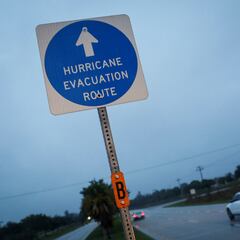Why has there been an increase in hurricane activity in the last days of August?
The Atlantic hurricane basin has seen the development of four storms in 39 hours, the shortest time span ever recorded. What’s behind the burst of activity?

There are several factors that need to come together in order for a tropical depression to grow into one of the most powerful forces of nature. Warm water is a key ingredient to the formation of hurricanes, and in the Northern Hemisphere oceans typically reach their peak temperatures in late summer.
However, a rash of named tropical storms, four over the span of just 39 hours, set a record for most in the shortest time span got a helping hand from another source. So, what’s behind the burst of activity?
Why has there been an increase in hurricane activity in the last days of August?
Part of the blame for the burst of activity in the Atlantic has to do with what is called the MJO according to The Weather Channel. The acronym stands for the Madden-Julian Oscillation, which is “a disturbance at the top of the atmosphere that can cause upward motion in the atmosphere” that occurs in the tropics.
Tropical Storm #Harold has formed in western Gulf - the 4th Atlantic named storm to form in just 39 hours (#Emily, #Franklin, #Gert). This is fastest time on record for 4 Atlantic named storm formations, breaking old record of 48 hours set in 1893 and equaled in 1980. pic.twitter.com/n3fnzwHvcO
— Philip Klotzbach (@philklotzbach) August 22, 2023
Related stories
The upward motion from the MJO gives a boost to thunderstorm activity and enhances the likelihood of tropical storms forming. In August and September, when bursts of activity are more common, additional favorable lower-atmospheric conditions become more prevelant that aid storm to develop in the form of less wind shear and higher humidity. Combined with warmer waters, at least 80ºF, and you have the three ingredients necessary for hurricanes to form.
The National Oceanic and Atmospheric Administration (NOAA) updated their 2023 hurricane season forecast increasing the number of named storms to as many as 21 this year, of which 6-11 could become hurricanes. This is due to record-warm sea surface temperatures and atmospheric conditions.


